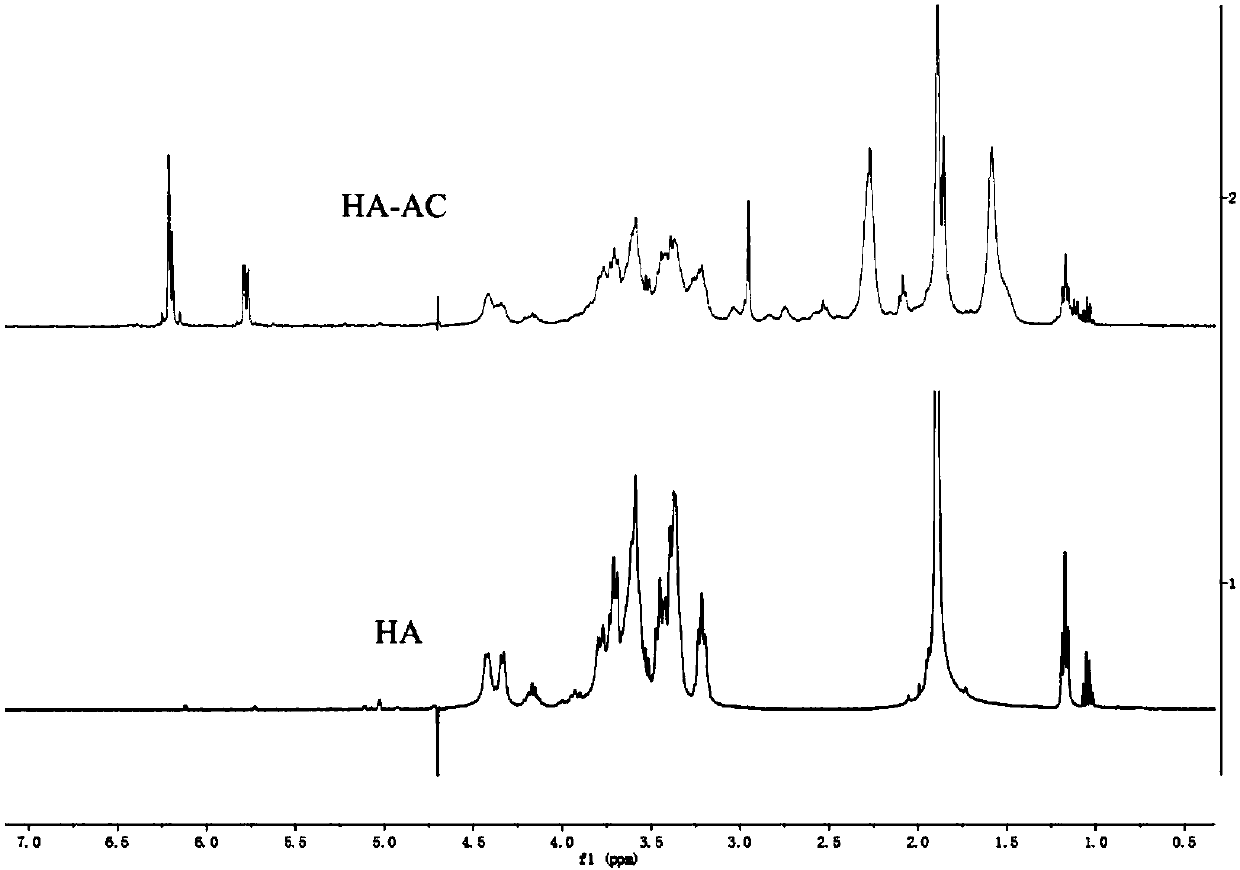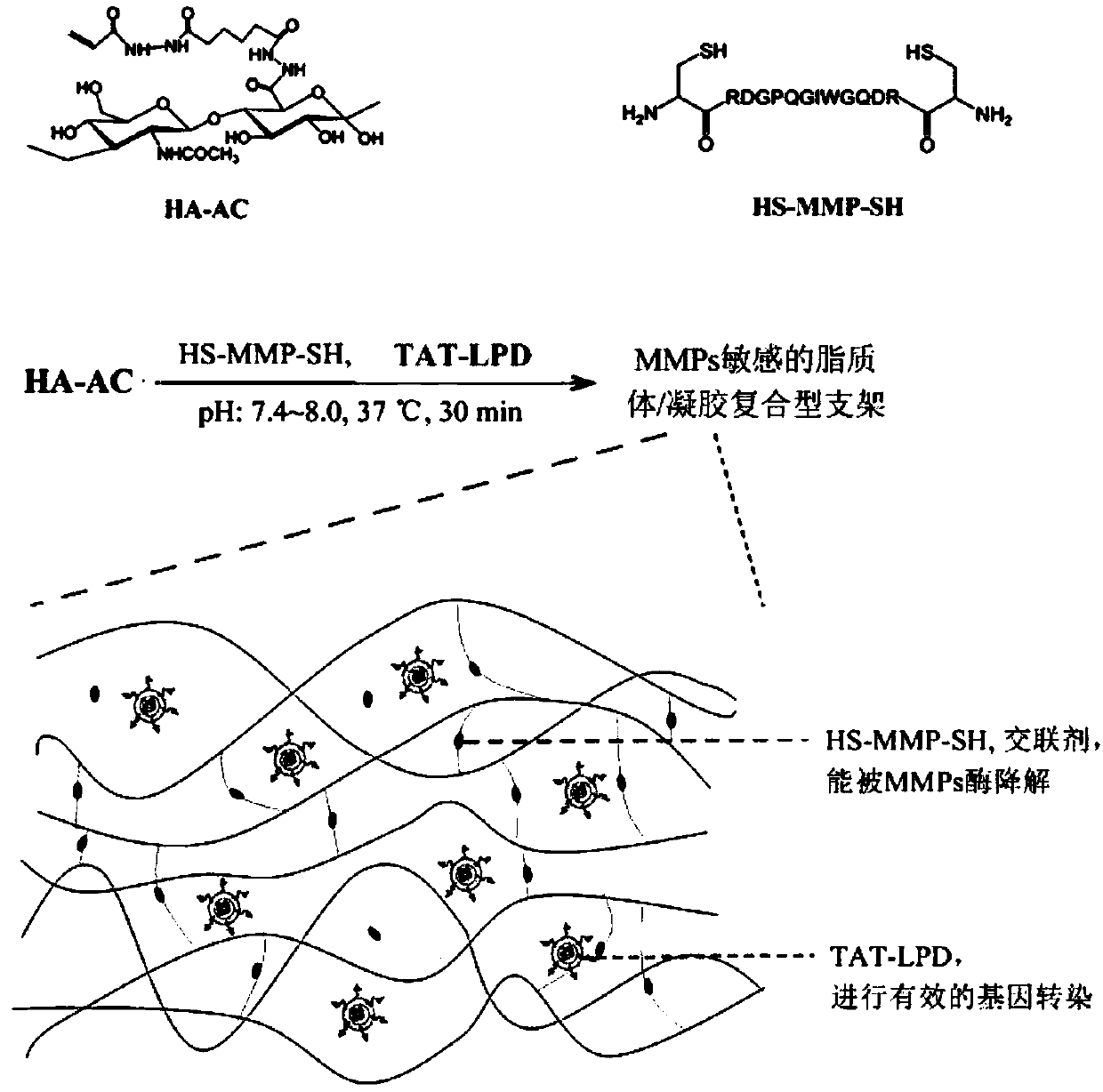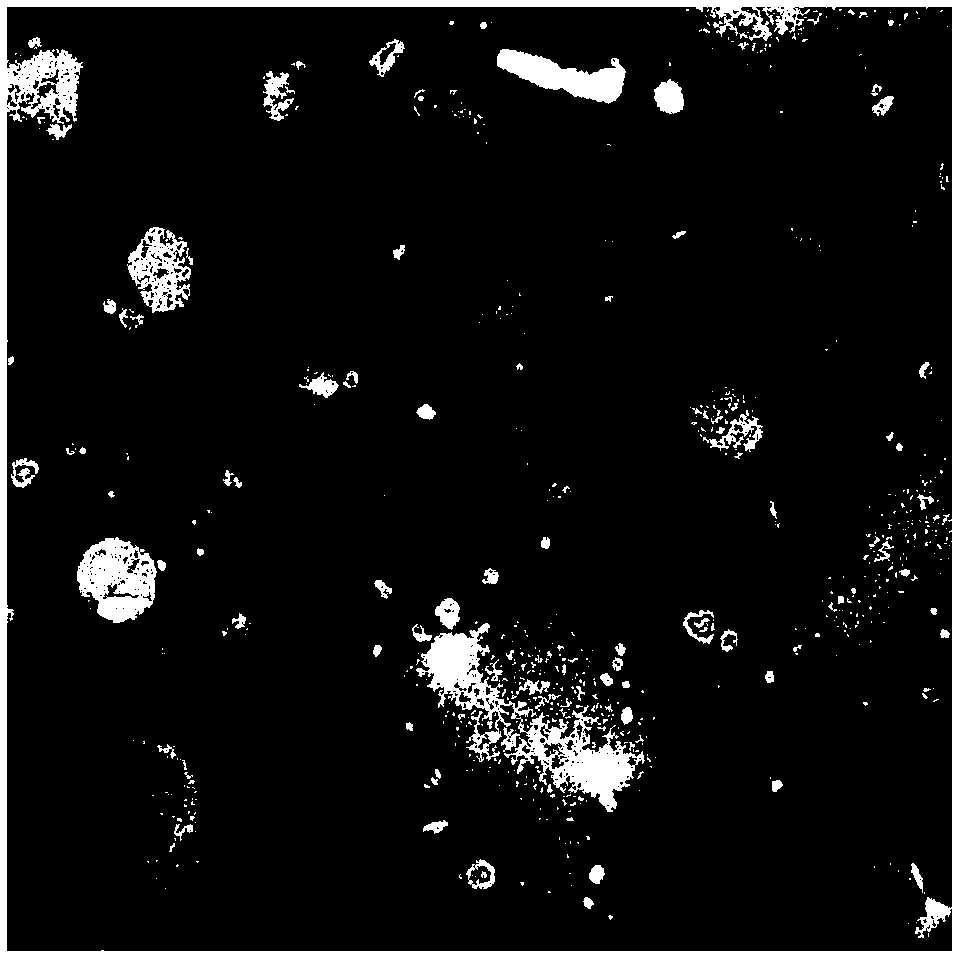Method for preparing lipidosome/gel composite gene activation scaffold
A gene activation and liposome technology, applied in the field of biomedicine, can solve the problems of limitation, slow release rate, low transfection efficiency of naked DNA, etc., and achieve the effects of reasonable method design, simple preparation process, and good research and application prospects.
- Summary
- Abstract
- Description
- Claims
- Application Information
AI Technical Summary
Problems solved by technology
Method used
Image
Examples
Embodiment 1
[0033] Embodiment 1: the preparation of TAT-LPD
[0034] First, blank cationic liposomes were prepared. Dissolve the two in chloroform according to the molar ratio of DOTAP:cholesterol=1:1, evaporate under reduced pressure on the rotary evaporator, remove the chloroform to obtain a lipid film, and hydrate with an appropriate amount of HEPES (10mM, pH 7.4) to make the final lipid concentration 10mM, ultrasonic for 3-5 minutes, use Extruder to push liposomes through 0.4μm membrane 11 times, and then push liposomes through 0.1μm membrane 11 times to prepare cationic liposomes with small particle size and uniform distribution, 4°C Save it for later use.
[0035] In the second step, the PRO / DNA complex is prepared. Accurately weigh a certain amount of protamine (PRO), dissolve it in HEPES (10mM, pH 7.4), and prepare a PRO solution with a concentration of 1mg / mL. Vortex and mix PRO and green fluorescent protein particle pEGFP-N1 according to the mass ratio of 0.6:1, and let it st...
Embodiment 2
[0038] Example 2: Preparation of 0% DSPE-PEG-TAT modified LPD
[0039] First, blank cationic liposomes were prepared. Dissolve the two in chloroform according to DOTAP:cholesterol=1:0.5 molar ratio, evaporate under reduced pressure on a rotary evaporator, remove chloroform, and obtain a lipid film, and hydrate with an appropriate amount of HEPES (10mM, pH 7.4) to make the final lipid concentration 10mM, ultrasonic for 3-5 minutes, use Extruder to push liposomes through 0.4μm membrane 11 times, and then push liposomes through 0.1μm membrane 11 times to prepare cationic liposomes with small particle size and uniform distribution, 4°C Save it for later use.
[0040] In the second step, the PRO / DNA complex is prepared. Accurately weigh a certain amount of protamine (PRO), dissolve it in HEPES (10mM, pH 7.4), and prepare a PRO solution with a concentration of 1mg / mL. Vortex and mix PRO and green fluorescent protein particle pEGFP-N1 according to the mass ratio of 0.8:1, and let ...
Embodiment 3
[0043] Example 3: Preparation of double-labeled TAT-LPD with fluorescein and rhodamine
[0044] First, fluorescein-labeled cationic liposomes are prepared. Dissolve the two in chloroform according to the molar ratio of DOTAP:cholesterol = 1:1, dip a small amount of fluorescein phospholipid Fluorescein DHPE (Molecular Probes, USA) into the above chloroform solution with a capillary tube, mix well, and reduce pressure on a rotary evaporator Evaporate and remove chloroform to obtain a lipid film, hydrate with an appropriate amount of HEPES (10mM, pH 7.4) to make the final lipid concentration 10mM, sonicate for 3 to 5 minutes, use an Extruder to push the liposome through the 0.4μm membrane 11 times, and then Push the liposomes through the 0.1 μm membrane 11 times to prepare fluorescein-labeled cationic liposomes with small particle size and uniform distribution, and store them in the dark at 4°C for later use.
[0045] The second step is to prepare the rhodamine-labeled PRO / DNA c...
PUM
| Property | Measurement | Unit |
|---|---|---|
| Particle size | aaaaa | aaaaa |
Abstract
Description
Claims
Application Information
 Login to View More
Login to View More - R&D
- Intellectual Property
- Life Sciences
- Materials
- Tech Scout
- Unparalleled Data Quality
- Higher Quality Content
- 60% Fewer Hallucinations
Browse by: Latest US Patents, China's latest patents, Technical Efficacy Thesaurus, Application Domain, Technology Topic, Popular Technical Reports.
© 2025 PatSnap. All rights reserved.Legal|Privacy policy|Modern Slavery Act Transparency Statement|Sitemap|About US| Contact US: help@patsnap.com



